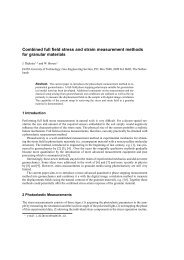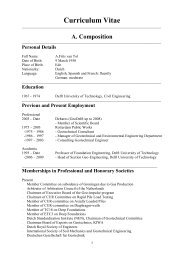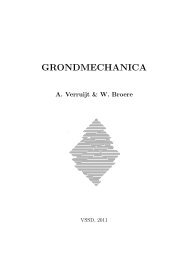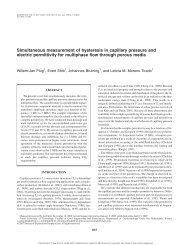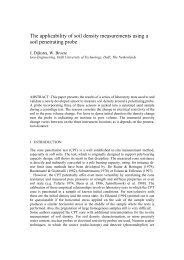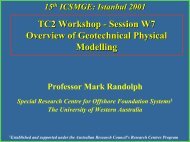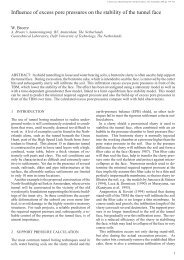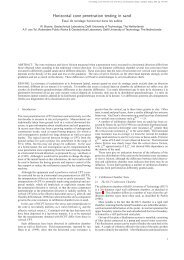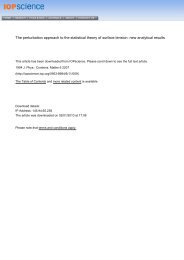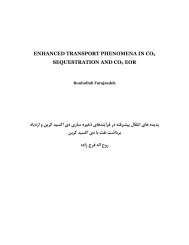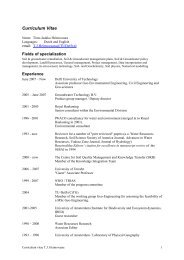Tunnel Face Stability & New CPT Applications - Geo-Engineering
Tunnel Face Stability & New CPT Applications - Geo-Engineering
Tunnel Face Stability & New CPT Applications - Geo-Engineering
You also want an ePaper? Increase the reach of your titles
YUMPU automatically turns print PDFs into web optimized ePapers that Google loves.
AbstractDuring the boring of tunnels with a slurry shield, a bentonite suspension is used to seal the soilat the tunnel face and transfer the support pressure onto the soil skeleton. When excavating,this filter cake is constantly removed by the cutter bits and the slurry infiltrates the soil torebuild the filter cake. In a foam-conditioned earth-pressure balance shield a similar infiltrationprocess, driven by the foam injections, takes place. This infiltration generates a groundwater floworiginating from the face, resulting in excess pore pressures in front of the face. These excesspore pressures lower the stability of the tunnel face and reduce the effectiveness of the supportmedium. This effect has been incorporated in a limit equilibrium wedge stability calculationfor a stratified soil. The resulting model can be used to calculate the minimal required supportpressure during excavation.It has been found that the influence of the infiltration process depends strongly on the permeabilityof the soil in front of the tunnel and is largest for medium to fine grained sands. In suchconditions the required excess support pressure (the difference between the support pressure andthe water pressure at rest) can easily be quadrupled. It has also been shown that the same stabilitymodel behaves equally well in conditions where infiltration is not a dominant factor and as aresult the model can be used for the calculation of the minimal support pressure in a wide rangeof soil conditions.From calibration chamber tests on sands with different gradation curves and at differentdensities it has been found that the cone resistance, obtained from a horizontal cone penetrationtest, is roughly equal to that obtained from a vertical <strong>CPT</strong> at low and high densities. At intermediatedensities, however, the horizontal cone resistance is approximately 20% higher. Thehorizontal cone resistance does not show a clear dependence on the gradation of the sand. Thesleeve friction, on the other hand, does show a variation with different grain size distributions,but this variation is not linear with grain size distribution. The sleeve friction, however, showsno dependence on the sand density. The results of calibration chamber tests are confirmed byresults of model tests and by a simple analytical model of horizontal cone penetration testing.The results indicate that H<strong>CPT</strong> can be interpreted to the same extent as vertical <strong>CPT</strong>.The excess pore pressures generated by the penetration of a piezocone in sand have beenmeasured in calibration chamber tests at penetration rates of 200mm/s. The pore pressures wererecorded using the pore pressure transducer at the cone shoulder of a <strong>CPT</strong>U cone as well as twopiezometers installed in the sand bed. In contrast to tests at regular speeds of 20mm/s, excesspore pressures have been measured, although no reliable relation with the density of the sandwas found.vii



